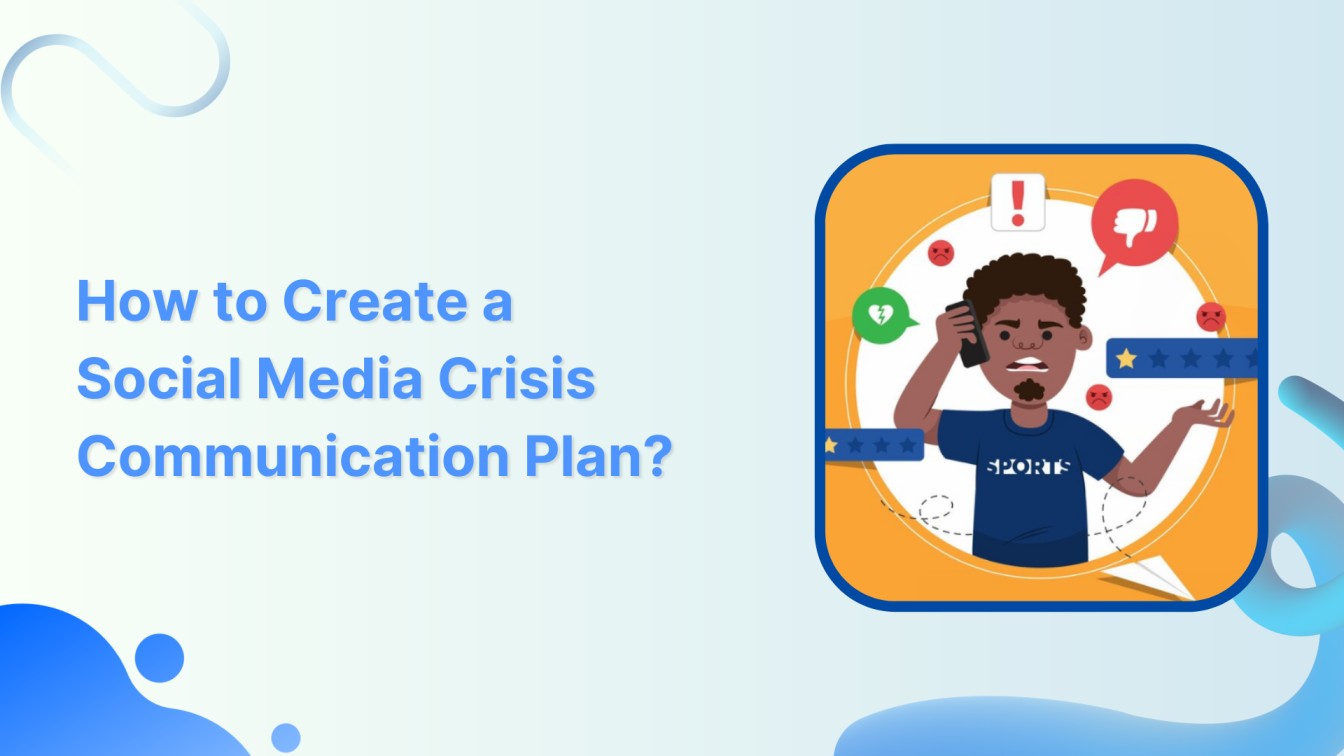Are you prepared for the unexpected in the world of social media? What if your brand faces a crisis? In this guide, we’ll answer the burning question: How can you create a social media crisis communication plan to navigate challenges effectively?



Social media crisis communication involves using platforms like Facebook, Twitter, or Instagram to handle difficult situations or emergencies. It aims to quickly share information, address real-time concerns, and manage the reputation of individuals, organizations, or brands during a crisis.
Plan, schedule, share, and analyze content for 15+ social media channels.


Steps to create a social media crisis communication plan
Follow these steps to help you develop a social media crisis communication plan:
1. Identify potential crises
List the potential crises your brand might face on social media. These could include negative comments, data breaches, PR disasters, or product recalls. Form a dedicated crisis management team, including members from various departments like marketing, public relations, legal, and customer support. Assign responsibilities to each team member.
Also Read: How to Positively Handle Negative Comments on Social Media?



2. Set objectives and create a communication chain
Set clear goals for your crisis communication plan. Are you looking to contain the situation, protect your brand’s reputation, or provide solutions to affected customers? Establish a transparent communication chain that outlines who is responsible for approving and disseminating crisis-related messages. Ensure that team members are easily reachable during a crisis.



3. Monitor social media and respond swiftly and honestly
Develop pre-approved message templates for different crisis scenarios. These templates should balance empathy and professionalism, providing a foundation for your responses. Utilize social media monitoring tools to track online conversations related to your brand continuously. Early detection of potential crises is critical to effective management.
When a crisis emerges, respond promptly, acknowledging the issue and assuring your audience that you are actively addressing it. Honesty, transparency, and empathy in your responses are crucial.



4. Coordinate across platforms and contain crises
Ensure that your crisis communication strategy is consistent across all social media platforms. Inconsistencies in responses on different platforms can lead to confusion. Whenever possible, take potentially lengthy or complicated conversations offline. To address their issues privately, provide an email address or a customer service hotline for individuals with specific concerns.



After the crisis has been resolved, conduct a thorough post-crisis evaluation. Analyze what worked well and what could have been handled better. Use these insights to refine and improve your crisis communication plan continually.
FAQs
How do you write a crisis communication plan?
To write a crisis communication plan, identify potential crises, assemble a dedicated team, establish objectives, create message templates, and set up monitoring tools for quick, consistent, and transparent responses.
What social media platforms are used for crisis communication?
Social media platforms commonly used for crisis communication include Twitter, Facebook, and Instagram.
Khadija Anwar
Meet Khadija Anwar, an accomplished tech writer with over 500 published write-ups to her name. Her impressive portfolio can be found on the ContentStudio blog, LinkedIn, and the Fiverr platform.






